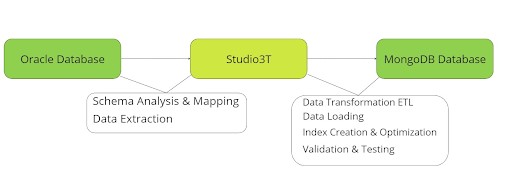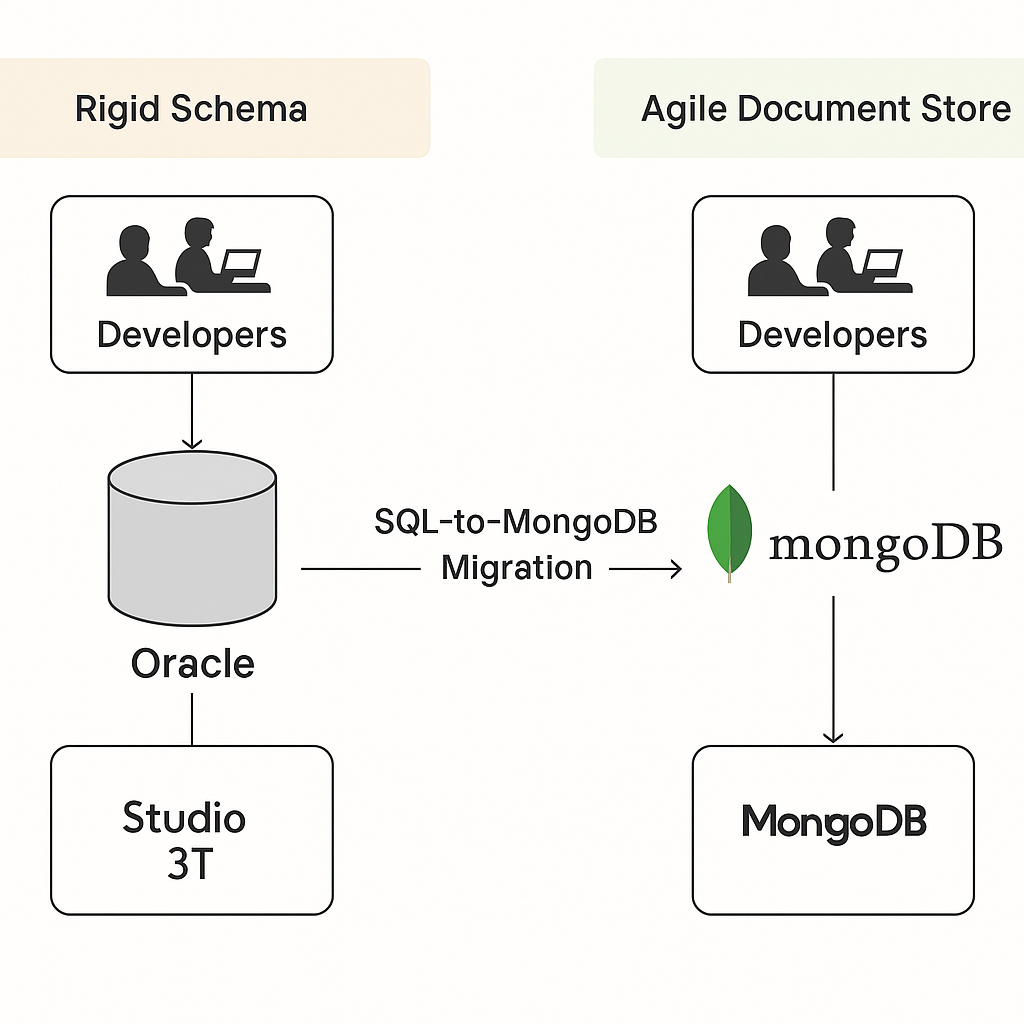Oracle to MongoDB: Speed Up by 30%, Costs Down by 40%
The Customer:
The customer managed a high-volume transactional data environment where agility and performance were critical. However, their Oracle setup had become restrictive—limiting scalability, slowing development, and inflating operational costs.
The Challenge:
Rigid Oracle schemas and growing data volumes led to slow query performance, delayed reporting, and poor application responsiveness during peak loads. High costs and long release cycles further hindered innovation and risked business competitiveness.
The Solution:
Ashnik orchestrated a structured migration from Oracle to MongoDB, encompassing architectural redesign, data migration and validation via Studio 3T, expert execution for minimal downtime, and post-migration performance optimization.
The Benefits:
Query performance improved by 30% (reports in minutes), feature delivery is 50% faster, and operational costs are reduced by 40% due to eliminated Oracle licensing. This also allows for developer agility and a scalable, cloud-ready backend.
Customer Overview
The customer was operating on an Oracle environment that had become increasingly rigid and cost-intensive. Schema inflexibility made data model changes time-consuming, slowing down development sprints and delaying new features. Reporting queries often took hours to complete, impeding operational decisions and affecting user satisfaction.
Scaling the infrastructure came with growing complexity and cost, especially as data volumes surged. Licensing fees and infrastructure expenses further drained budgets, restricting the company’s ability to innovate. The need for a more agile, scalable, and cost-effective data platform became inevitable.
The Turning Point
Persisting with Oracle was creating an operational deadlock. As data grew, query latencies worsened, leading to performance bottlenecks and slow application response times during peak hours. The rigidity of relational schemas limited flexibility, stalling product releases and innovations.
Coupled with escalating operational costs, these limitations risked business continuity and competitive edge. It was clear that a shift to a more modern, adaptable data architecture was essential to restore agility, improve performance, and optimize operational costs.
The Solution
Ashnik partnered with the customer to facilitate a seamless migration from Oracle to MongoDB, with Studio 3T as the key enabler. The migration wasn’t just a lift-and-shift—it involved a deliberate architectural transformation tailored for scalability, performance, and flexibility.

Expert-Led Transformation
- Assessment & Strategy: Conducted an in-depth analysis of the Oracle workloads, mapped dependencies, and designed a phased migration plan with minimal risk.
- Data Modeling: Transformed relational schemas into document models optimized for MongoDB.
- Migration Engineering: Configured Studio 3T for precise schema mapping, data migration, and validation workflows.
- Execution Management: Orchestrated parallel migration pipelines to ensure service continuity throughout.
- Performance Tuning: Post-migration, optimized indexing and query paths to enhance application performance.
- Capability Transfer: Delivered comprehensive training and support to empower the internal teams in managing the MongoDB environment.
Challenges Addressed
- Rigid Schema Constraints
- Performance Bottlenecks
- High Licensing and Operational Costs
- Scalability Challenges
- Migration Complexity

Architecture Summary
- Oracle as the source system
- Studio 3T for guided migration and schema transformations
- MongoDB replica sets deployed on cloud VMs
- Optimized collections and indexing strategies
- Integrated monitoring and validation for post-migration stability

Results
- 30% faster query performance, dramatically reducing data retrieval times.
- 50% quicker feature delivery, boosting development velocity and time-to-market.
- 40% reduction in operational costs, freeing resources for strategic priorities.
- Developer-led schema changes, enabling faster adaptability without infrastructure bottlenecks.
- A scalable, microservices-friendly backend, built for future growth and cloud-native developments.
Conclusion
Through a strategically executed migration powered by Ashnik’s expertise and Studio 3T’s capabilities, the customer transitioned to a future-ready MongoDB platform. The result: enhanced agility, improved performance, and cost efficiencies that unlock new opportunities for growth and innovation.
Contact Ashnik to modernize your enterprise database architecture.
